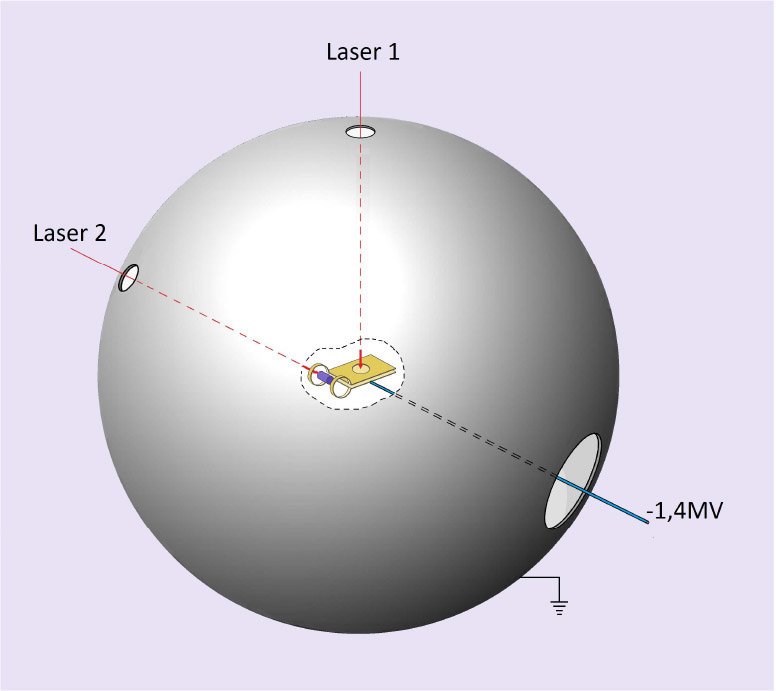Spie
Heinrich Hora 14 July 2015
A laser-driven technique to ignite hydrogen-boron fuel offers the possibility of nuclear fusion for clean, sustainable energy generation.

For more than 70 years, scientists have sought to harness energy from nuclear fusion as the ultimate sustainable power source. Initially, they considered fusion of heavy and very heavy hydrogen isotopes (deuterium and tritium, or DT), as will be attempted at the world’s largest magnetic fusion project, the International Thermonuclear Experimental Reactor (ITER).1 However, neutrons generated from fusion at ITER would create the “hottest radioactive environment on earth,”1 presenting major practical challenges.2
One alternative to DT fusion is reacting hydrogen (protons) with the boron-11 isotope (HB11 fuel). This approach avoids generation of neutrons and produces only stable helium as alpha particles. Furthermore, the resultant radiation is less harmful than that produced from burning coal. However, laser-driven ignition of HB11 using thermal compression by standard nanosecond laser pulses would require compression of the HB11 fuel to 100,000 times its solid density.3 Therefore, until now, HB11 fusion has appeared unfeasible. We sought to overcome this problem by considering an alternative laser approach known as block ignition.4 A modification of fast ignition, this technique uses ultrashort-pulse lasers, and involves non-thermal application of picosecond pulses with powers in the petawatt range. This induces ultrahigh acceleration of plasma blocks by direct conversion of the laser energy into macroscopic plasma motions by nonlinear (ponderomotive) forces. As a result, it avoids the very complex problems of heat and instability that affect laser fusion with nanosecond pulses.5 Through computational studies, we showed that using block ignition6 would make laser fusion of HB11 no more difficult than that of DT.7 Steve Haan of the National Ignition Facility project even suggested that HB11 “has the potential to be the best route to fusion energy.”8
Initially, we performed our numerical simulations only for plane target interaction. However, when we used spherical and cylindrical geometries,9, 10 an ultrahigh magnetic field in the 10 kilotesla range11 trapped the block-ignited HB11 plasma, such that elastic collisions of the alpha particles transferred about 600keV to the boron nuclei. These nuclei have very large cross sections for secondary HB11 reactions, increasing the gain and resulting in avalanche multiplication (multiplying the number of charge carriers). We made approximate calculations for these results9, 10 and confirmed the avalanche process by experiments.12
We calculated that 30PW picosecond laser pulses with 30kJ energy irradiating a solid cylinder of HB11 fuel of centimeter length and millimeter radius in a 10 kilotesla magnetic field may produce more than 280kWh electric energy (worth about $28). The calculation assumed a spherical reactor of more than 1m radius (see Figure 1) around a central reaction unit that is charged to −1.4 million volts. This voltage stops the generated alpha particles and converts their kinetic energy into electric energy. A very small fraction of this energy is needed to drive the lasers, and we further estimated costs of about $18 per shot associated with replacing the HB11 fuel and the reaction unit (which is destroyed each time) and recharging it. At a rate of one reaction per second, the generated electricity would produce a net income of over $300 million/year. This money should cover the investment and other running costs of the power station, perhaps with a good profit margin. Such a reactor would be a clean, safe, and low-cost energy source.

In summary, our predictions are based on non-thermal ignition with nonlinear force-driven plasma blocks (predicted13 and measured14) using extreme laser pulses of >PW power and 15 and nanosecond pulse ultrahigh magnetic fields in the 10 kilotesla range.10 Furthermore, we verified the avalanche HB11 reaction based on experimental measurements.12
Our work encompasses more than 40 years’ research6,13 made possible only through provision of extremely high power picosecond laser pulses for demonstration of the predicted picosecond block acceleration and ignition with ultrahigh magnetic fields. Our future work will focus on launching large-scale research based on our findings, to enable environmentally acceptable, clean, and economic energy production.
Heinrich Hora
University of New South Wales
Sydney, Australia
Heinrich Hora has been professor of theoretical physics since 1975 and emeritus since 1992. He is a visiting professor at the Universities of Rochester, Tokyo, Osaka, and Giessen, and the Weizmann Institute, as well as the European Organization for Nuclear Research (CERN). His areas of interest include plasma theory and lasers, nonlinear forces, relativistic self-focusing, the Schwarz-Hora effect, volume ignition, and predicted non-thermal ultrahigh acceleration of plasma blocks for ignition of boron fusion or hadron-cancer therapy.
